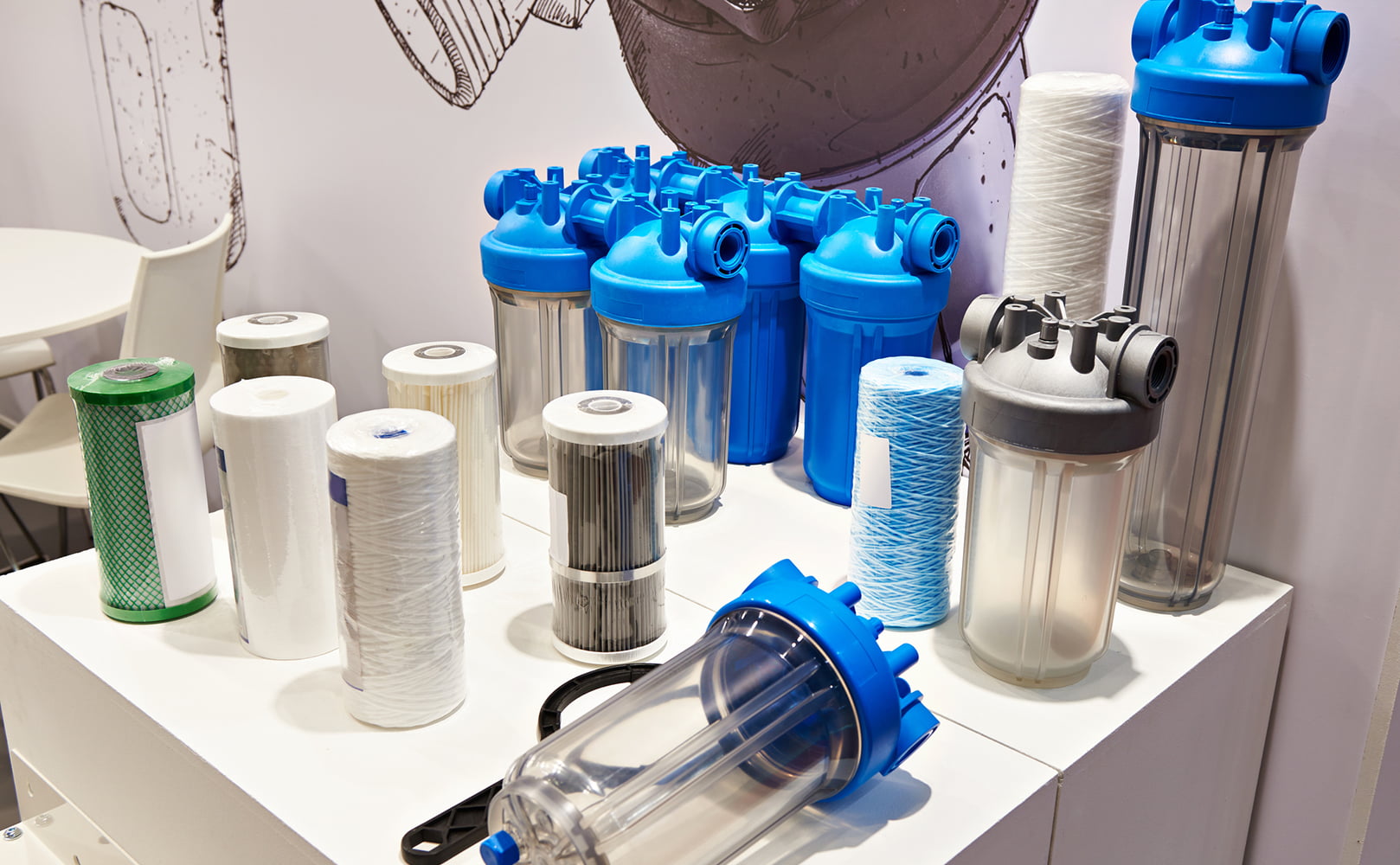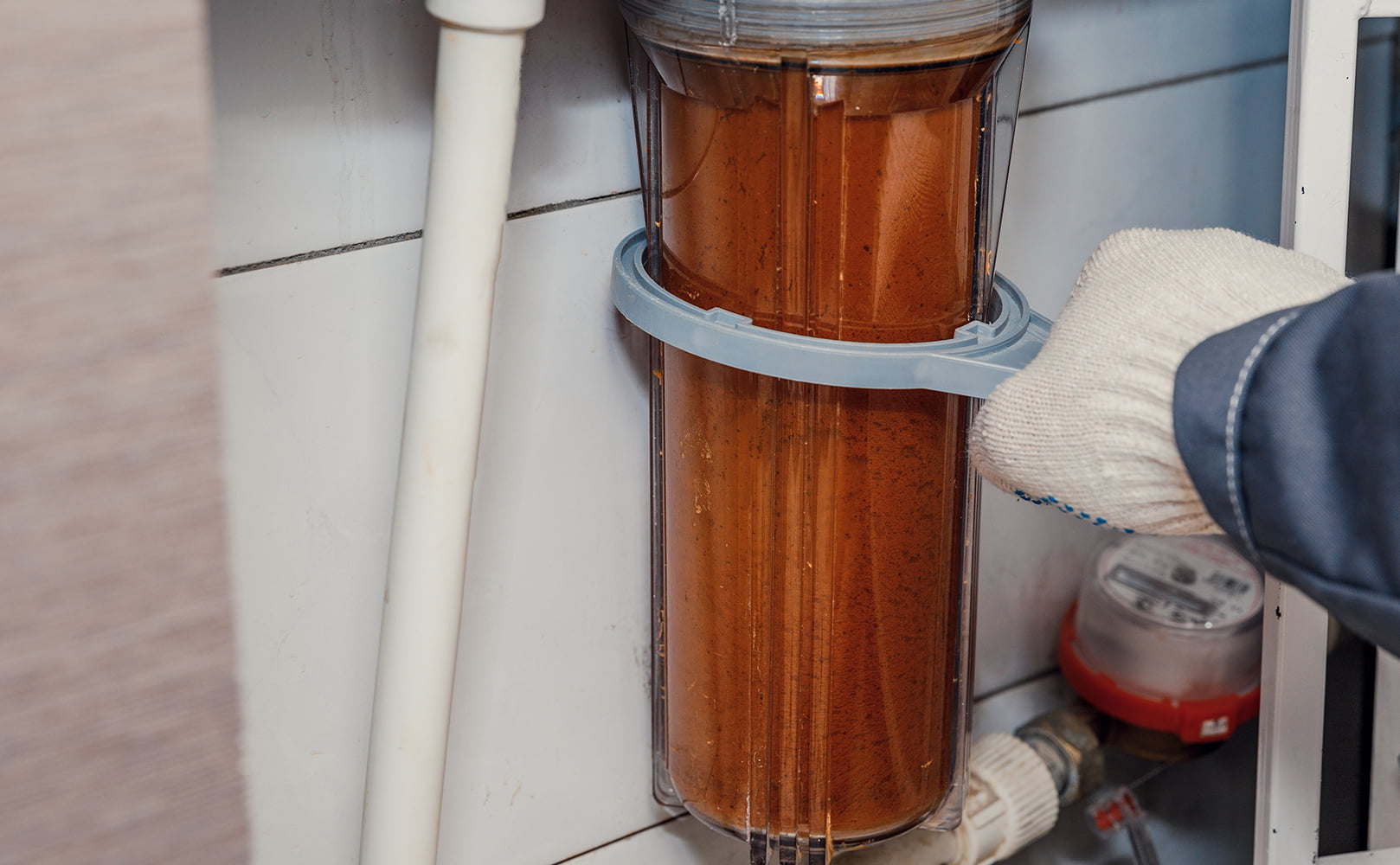Sediment Filter Material: All You Need to Know!
Written by: Alexandra Uta // Last Updated: Nov 1, 2022
This page may contain affiliate links. If you buy a product or service through such a link we earn a commission at no extra cost to you. Learn more.
Sediment filters trap fine and coarse dirt like silt, rust bits, and sand protecting water treatment systems and water-using appliances from harm.
These sediment filters can be made of different materials.
The most common sediment filter materials are discussed below. So, let’s jump right in!
Key Takeaways
- There’s a range of common sediment filter materials: Polypropylene, polyester, cotton, cellulose, and ceramic.
- Polypropylene and polyester are used for pleated, spun, melt-blown, and string-wound filters.
- A combination of cellulose and polyester in sediment filters provide for increased wet strength.
- Cotton is used for certain string-wound filters.
5 Common Sediment Filter Materials
The 5 common sediment filter materials include polypropylene, polyester, cellulose, ceramic, and cotton. Let’s discuss each in detail:
Polypropylene
Usually, pleated, spun, melt-blown, and string-wound filters consist of polypropylene. These filters remove particles like dirt, rust, mud, floating sediments, other larger pieces.
Polyester
You can also find pleated, spun, melt-blown, and string-would filters made of polyester.
Cellulose
Some sediment filters provide a mix of pleated cellulose and polyester, increasing the cartridge’s wet strength. They ensure superior depth filtration and reduce extra-fine dirt, rust, and scale particles.
Cotton
Some string-wound filters are made from cotton. This string is tightly wrapped around a core, producing a graded density that will catch extra-fine particles.
Ceramic
Ceramic filters have pores of about half a micron in size that filter bacteria and particles out of water.
What Are the Different Types of Sediment Filter Cartridges, How Do They Work, and What Do They Remove?
Sediment filters remove floating and sometimes visible particles like dirt, sand, and other debris. They also resolve turbidity (cloudless caused by too many suspended solids).
Unfortunately, these filters don’t eliminate chemicals and dissolved heavy metals and other ions. Moreover, they don’t enhance the taste and smell of water.
In short, sediment filters, which usually come in form of cartridges, keep your water visually clean, especially when combining forces with other filtration systems.
Let’s look at the different types of sediment filter cartridges and how they work.
Pleated (Surface) Filters
Pleated filters, also known as surface filters, consist of thin sheets of filter media, usually made from polypropylene or polyester.
These accordion-shaped filter cartridges have more surface than other types of filters because of the volume of pleated folds. When the folds take on dirt, a layer is created, increasing the filter’s efficiency.
Thanks to their large surface, pleated sediment filters can successfully handle large amounts of contaminants. The best part? You can reuse surface filters, as they’re washable.
Spun/Melt-Blown Filters
Spun as well as melt-blown filters remove sediments often using depth gradients. High-velocity gas is blown via molten polymer, which results in intricately layered fibers. As a result, the inside of these filters is thicker than the exterior, so as water travels to the core, finer sediments are being trapped.
Often, spun and melt-blown filters are effective at under 10 microns, so they’re great at removing super fine particles.
String-Wound Filters
The string-wound filter is a depth cartridge made by weaving polypropylene, cotton, or polyester yarn around a center core and forming a gradient structure for better filtration.
As water moves through the string layers, finer and finer particulate matter is captured. The only downside of string-wound filters is that they’re not reusable.
Once string-wound filters become oversaturated with sediment, they lose effectiveness. The yarn loosens up, opening a dirt path, indicating it’s time for a replacement.
Adsorptive Filters
You can find adsorptive filters in pleated and depth formats. What’s different about these filters is that some use a process known as “electrokinetic adsorption”.
Unlike other filters, adsorptive filters are “charged” and use electrokinetic adsorption for attracting and preserving certain microorganisms and minuscule colloidal matter that would flow through traditional sediment filters.
Ceramic Filters
Ceramic filters consist of Kieselguhr, also known as diatomaceous earth.
Kieselguhr composes primarily of silica. And when exposed to high temperatures, you can easily form a ceramic cartridge or filter candle out of this sedimentary rock.
Typically, ceramic filters remove any floating particles from water including microorganisms.
Besides, ceramic filters make a great choice, as they’re reusable: Simply peel off their outer layer and they are as good as new.
About Micron Ratings
When you read about sediment filters, you will notice the word “micron” thrown around very often. That’s actually the rating system of sediment filters.
The micron number indicates the size of the particles different filters catch. For instance, a 10-micron sediment filter will capture all particles sized 10 microns or larger.
By the way, a micrometer, also known as a micron, equals one-millionth of a meter in size.
Absolute vs. Nominal Micron Ratings
Additionally, you can find “nominal” and “absolute” micron ratings:
Nominal
The Water Quality Association says that nominal filters will eliminate approximately 85% of the particles of the size they’re rated for.
Simply put, a sediment filter rated as 1-micron nominal can handle about 85% of the 1-micron sized particles present in water.
Absolute
On the other hand, absolute filters will remove 99.9% of the particles of their rated size.
You can find these ratings in extremely tight filters used for different operations in which the filter’s efficiency plays a crucial role.
For instance, if you’re looking for a filter that will remove E. coli, you can’t settle for 85% effectiveness. Instead, consider filters with 3 or 4-log reduction (1-log reduction = 90%; 2-log reduction = 99%; 3-log reduction 99.9%; etc.).
Can You Verify the Micron Efficiency of Sediment Filters?
You can’t really tell if a manufacturer stands behind the claims about a filter’s efficiency, whether it’s absolute or nominal.
For instance, some companies might consider 70% removal in nominal sediment filters acceptable for less serious applications.
The worst part? There’s no way you can confirm claims, as there’s no universal system that assures consistency.
That said, overall, most sediments filters are very reliable and provide excellent results.
If you have any questions about sediment filter material please don’t hesitate to leave a comment below!
Information provided on BOS is for educational purposes only. The products and services we review may not be right for your individual circumstances.
We adhere to strict editorial guidelines. Rest assured, the opinions expressed have not been provided, reviewed, or otherwise endorsed by our partners – they are unbiased, independent, and the author’s alone. Our licensed experts fact-check all content for accuracy. It is accurate as of the date posted and to the best of our knowledge.



